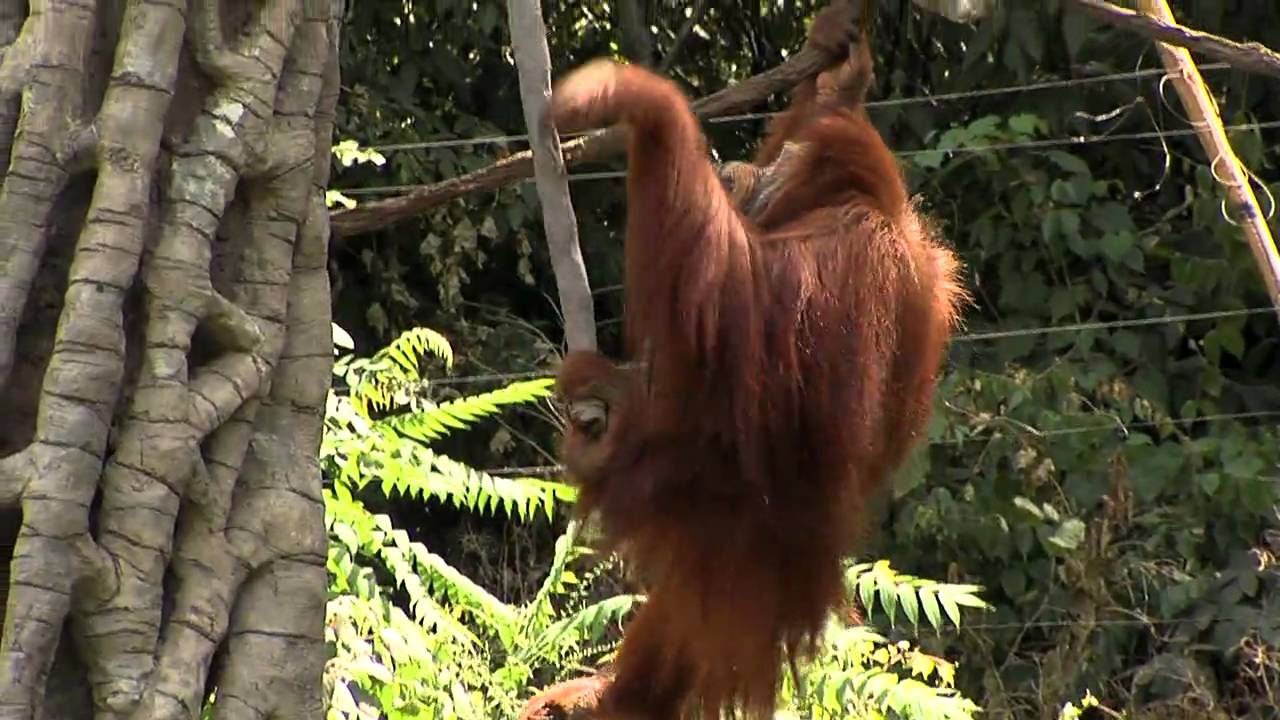
Orangutans in Zoos Demonstrate Extraordinary Curiosity and Cognitive Exploration, Research Reveals
A groundbreaking study published in Scientific Reports has highlighted a captivating difference in exploratory behaviors between orangutans housed in zoos and those living in the wild. The research, which examined over 12,000 instances of object manipulation among a diverse age group of Sumatran orangutans (ranging from six months to 76 years), found that orangutans in zoological settings show significantly heightened curiosity and engage in more complex interactions with their environment relative to their wild counterparts.
Enhanced Cognitive Engagement in Captivity
Led by Isabelle Laumer and senior author Caroline Schuppli, the international research team assessed orangutans residing in German and Swiss zoos against those at the Suaq Balimbing research site in Indonesia. The outcomes suggest that the environment significantly influences the ways these intelligent primates think, learn, and explore.
“Our research demonstrates that orangutans in zoos not only engage in more exploration but also approach it differently,” Laumer stated. “What’s particularly intriguing is that even when handling similar objects, zoo-dwelling orangutans showcased a more extensive array of actions and were more inclined to utilize tools or manipulate several objects simultaneously.”
Variation in Object Manipulation
While wild orangutans predominantly interacted with naturally available materials like leaves, twigs, and tree bark, those in zoos explored a broader spectrum of items, such as puzzles, toys, and stackable enrichment tools. The researchers noted that the type of objects alone did not dictate behavior. Even when both groups interacted with comparable natural materials, orangutans in zoos exhibited more intricate and diverse manipulative behaviors, often integrating objects or employing them as tools.
This indicates that the divergence is not solely reliant on enrichment availability but also on the cognitive freedom and surplus energy provided by the zoo environment. With reliable food provision, sufficient rest, safety from predators, and structured daily routines, zoo orangutans are afforded the means to explore more intensively and imaginatively.
Lifelong Exploration and Learning
A striking element of the study was the difference in the developmental trajectory of exploratory behavior. Wild orangutans showed heightened object exploration during their early years, which sharply diminished around the weaning age of eight, likely due to the growing demands of acquiring foraging skills imperative for survival.
In contrast, zoo-housed orangutans sustained elevated levels of exploration throughout their lives, from adolescence into seniority. This enduring interest in manipulation and play reflects reduced survival pressures and suggests that the zoo environment facilitates ongoing cognitive development well past the juvenile phase.
Implications for Animal Welfare and Cognitive Research
“These results highlight the profound impact of the environment on animal behavior and cognitive progress,” Schuppli remarked. “Moreover, it presents unique opportunities—by contrasting wild and zoo-dwelling animals, we can gain deeper insights into the full range of a species’ cognitive potential.”
The study challenges preconceived notions regarding animal behavior in captivity. While some critics express concern that zoo environments may distort “natural” behaviors, this research indicates that such settings can reveal latent cognitive capabilities and overlooked dimensions of animal intelligence that are often suppressed in the wild by survival necessities.
Furthermore, the data indicated that both populations began to cultivate exploratory behaviors at comparable ages, suggesting that basic cognitive programming is innate. However, zoo orangutans practiced and enhanced these behaviors more frequently and with greater sophistication, pointing to the role of environment in fostering, rather than initiating, cognitive skills.
Rethinking Zoo Animal Observations
For zoo visitors, this finding implies that the seemingly playful antics of orangutans are not merely for entertainment. When orangutans interact with puzzle feeders, stack objects, or utilize sticks to obtain food, they are actively engaging their cognitive and problem-solving abilities.
These behaviors showcase essential traits such as adaptability, innovation, and tool utilization—features deemed vital for survival and evolution. Observing such activities in a zoo context thus provides a rare insight into the upper limits of what these apes are capable of achieving.
Looking Forward
The insights garnered from this study not only enhance our comprehension of primate behavior and intelligence but also have broader ramifications for the design of captive environments. By establishing enriching, varied, and stimulating habitats, zoos may significantly enhance animal welfare while also creating opportunities for pivotal cognitive research that deepens our understanding of both the limitations and potentials of species inhabiting different environments.
In a time when conservation and education are increasingly paramount, this study reinforces the notion that when managed responsibly, zoos can serve as crucial centers for unveiling the complexities of animal cognition.
Explore Further
For ongoing updates and additional discoveries from the realm of animal behavior and cognition, subscribe to Wild Science and receive the latest research directly to your inbox.
—
Reference:
Laumer, I., Schuppli, C., et al. (2025). “Comparative exploration in zoo-housed and wild orangutans.” Scientific Reports. https://www.nature.com/articles/s415